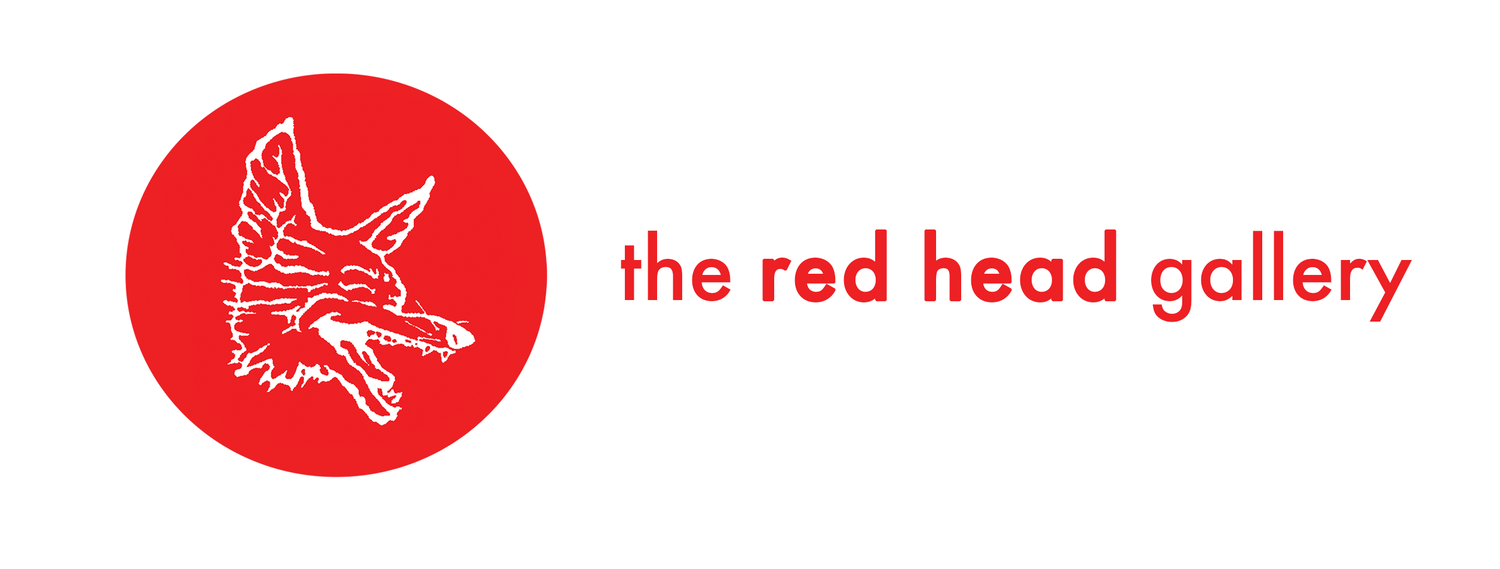Deviant Detours
PARTICIPATING ARTISTS:
JANET BELLOTTO
PAULA BRASWELL
LINDA DUVALL
LAURA HAIR
LYNNE HELLER
JOAN KAUFMAN
NINA LEO
JANE MARTIN
MARGARET RODGERS
DIANNE PEARCE
MARK PRIER
RAM SAMOCHA
SALLY THURLOW
WENDY WALLACE
ELAINE WHITTAKER
The Red Head Gallery initiated a collaboration with the contemporary art gallery Kunsthaus Santa Fe to create an exchange between the two venues. Kunsthaus Santa Fe was invited to exhibit a selection of their artists in Neurotic Playground, which opened July 2 and ran through August 9, 2008. In turn, artists from the Red Head Gallery now travel to Mexico in February 2009 to exhibit their work at Kunsthaus’ location in San Miguel de Allende, in an exhibition entitled Deviant Detours.
In this exhibition, the artists of Red Head Gallery reflect upon the fragility of our natural landscape, social environment, and methods of communication as key terms reflecting our immediate space. More than ever today, codes and virtual messages dictate our daily interactions, where in this mobile world we are able to cross more borders and increase our navigational skills. While communication systems may bridge gaps in distance, they also allow for hiding places, new possibilities for belonging and routes for living in an unnatural world. These contemporary systems of communication can also lead to misinterpretation and even fear. In relation to this invisible space, vastness of the “great outdoors” has become two-fold or mirrored: both physical and virtual. As we continually search outward for learning of what is foreign, nature changes and adapts.
Deviant Detours embraces the expedition to Mexico and the maps that will unfold as way of physical interaction and translation of narrative journeys. Deviant Detours attempts to bridge the gap between artistic communities that exist in different countries, in this initial instance between Toronto, Canada, and San Miguel de Allende, Mexico. As artists, we tend to reflect on issues that surround our immediate environment and question or bring to light ideas that affect us. However, it is inevitable that we soon reach a wall and then begin to search for a new route for inspiration, creation and ultimately the dissemination of our ideas.
Deviant Detours in one way allows artists a path to present ideas, and in another provides a throughway for encountering a new audience with whom to enter into discussion, share our thoughts and also experiment, all with the intention of learning. Deviant Detours at Kunsthaus will exhibit works by Janet Bellotto, Paula Braswell, Linda Duvall, Laura Hair, Lynne Heller, Joan Kaufman, Nina Leo, Jane Martin, Margaret Rodgers, Elaine Whittaker, Dianne Pearce, Mark Prier, Ram Samocha, Sally Thurlow, and Wendy Wallace. The new works these Canadian artists will contribute represent their individual practices from the perspective of the border or borderline, and include work that reflects on our environment, language and social relationships, as well as work that focuses on mergers between art and science, and spans the genres of painting, photography, sculpture and video.
Detours are necessary as our private space becomes more inundated everyday; it disappears, and is overwhelmed by the world around us, as it rapidly grows and changes. Bellotto investigates the plausibility of the ‘world that drowned’ as Heller navigates between virtual worlds to bridge various divides. While we may appear to be more connected than ever before through virtual technologies, Leo comments on how the media estranges us from direct sensorial closeness, and how it manufactures isolation. Rodgers focuses on urban regeneration, and Whittaker considers the cellular communities transforming us. The subject of memory and its reflection in different cultures and environments is a detour that Thurlow considers, while Hair charts the organic form, much in the way a surveyor charts landmarks, delineating body parts with mapping devices.
Reflection on the reality of disaster and contemporary fear are found in Kaufman’s photographs. Braswell’s photo-based work of layered maps and portraits also looks at fear and the borders existing just at the edge of our backyards, and Martin’s photographs of fences—be they rigid or permeable, threatening or inviting, inserted by consensus or in conflict—say a lot and do a lot. Fear ignites the necessities of survival central to the Canadian outdoors. Prier focuses on themes of wilderness, mapping, and rural survival through sculpture. Landscape, a relative element in Deviant Detours, comes full circle as Wallace defines the urban landscape as a cultural symbol. Borders of language tie in strongly in Deviant Detours in the works of Duvall and Pearce. Duvall explores the gaps in communication that occur in spoken language as Pearce questions the authority of language within social circles and cultural divides. To this end, Samocha observes the singular, private and intimate to examine political realities. The combination of these works in Deviant Detours is intended to create an evocative display conveying social, political and ecological issues whose implications we can either relate to or question.
The Deviant Detours exhibition gratefully acknowledges the support of the Ontario Arts Council.



